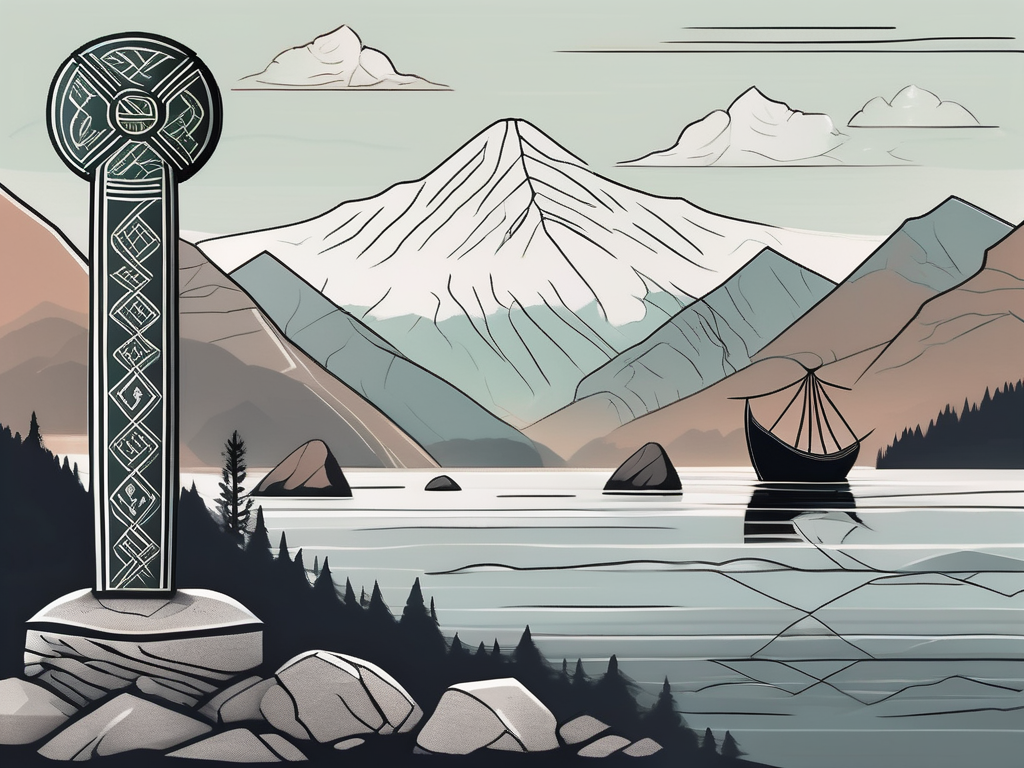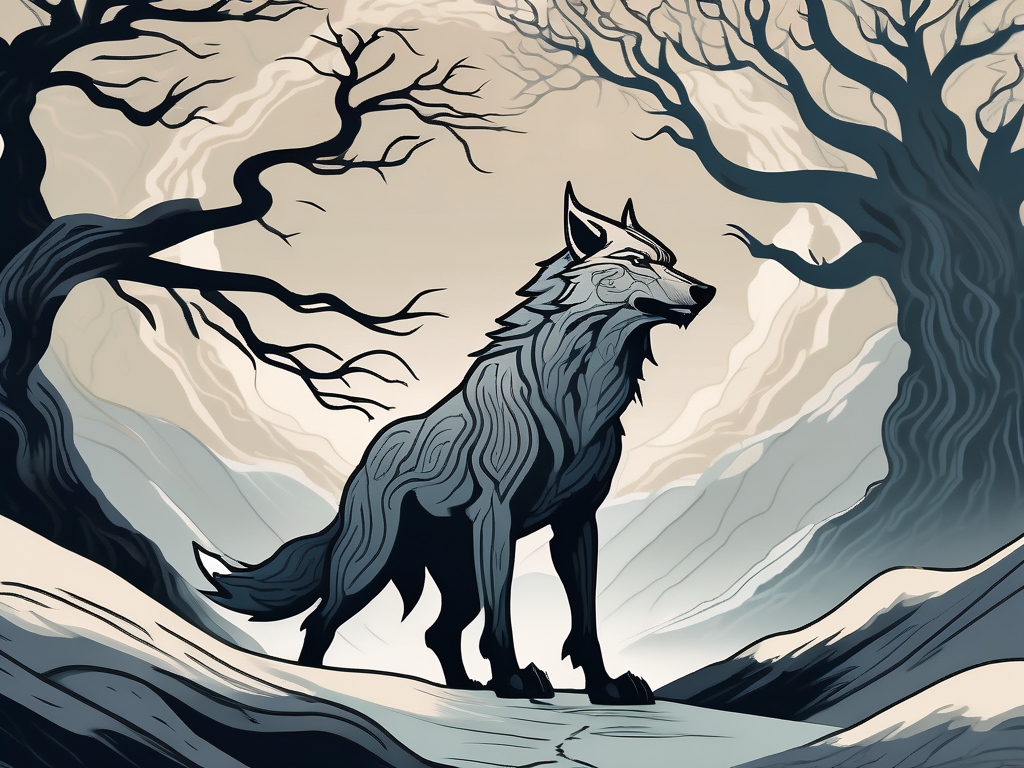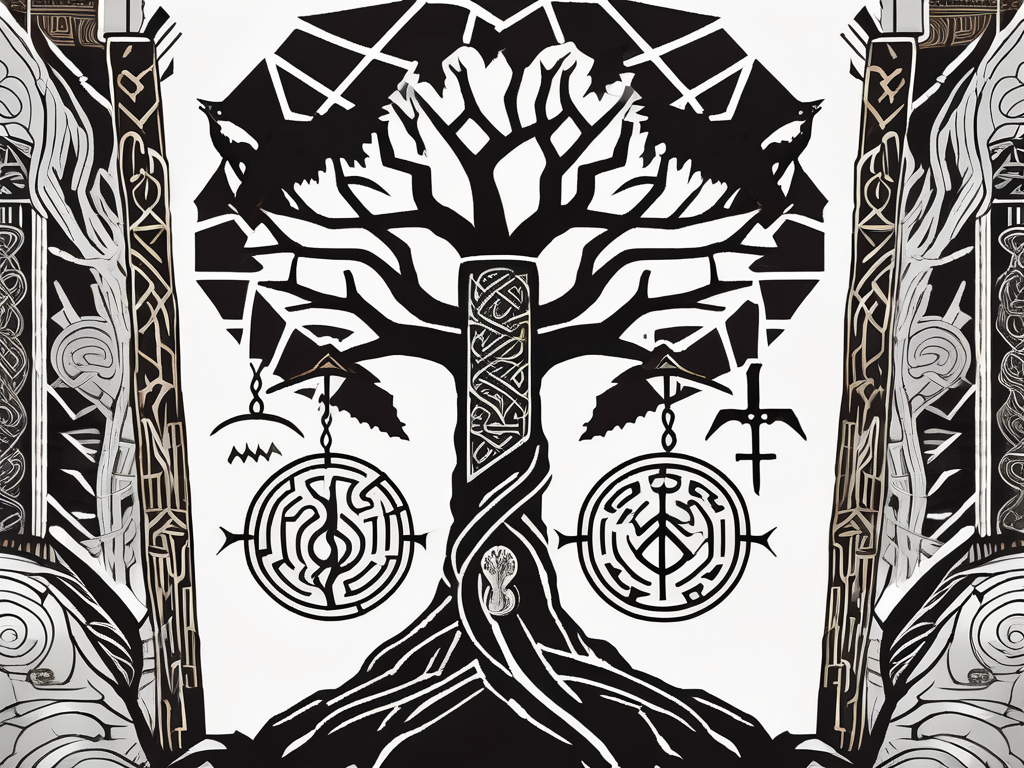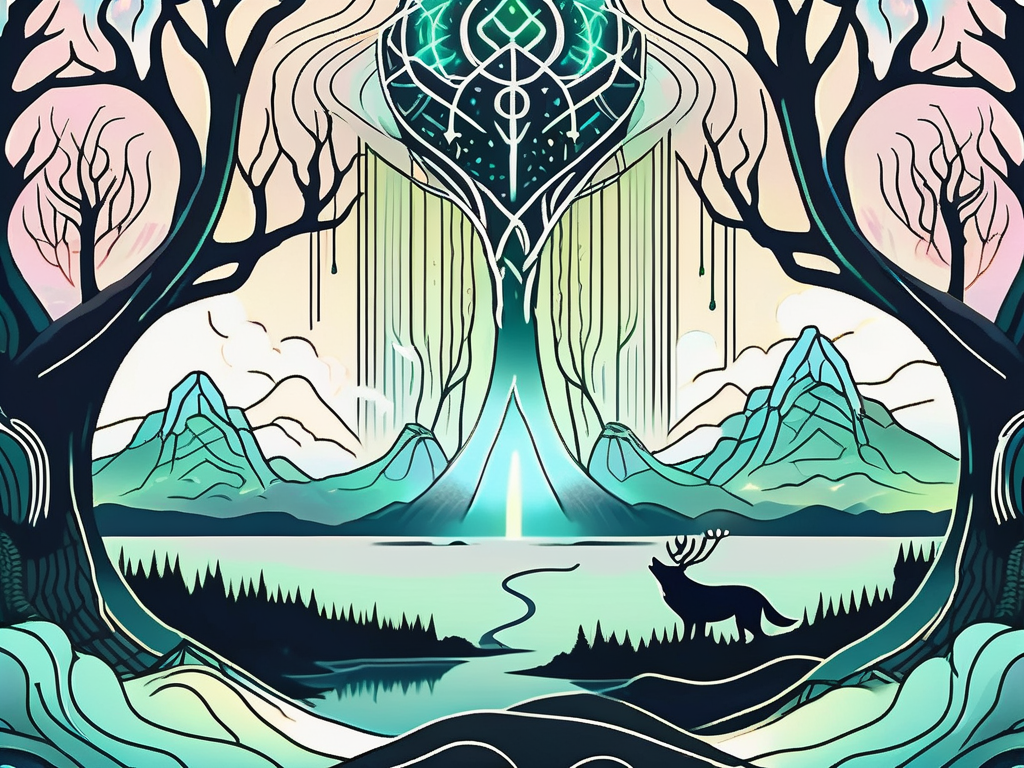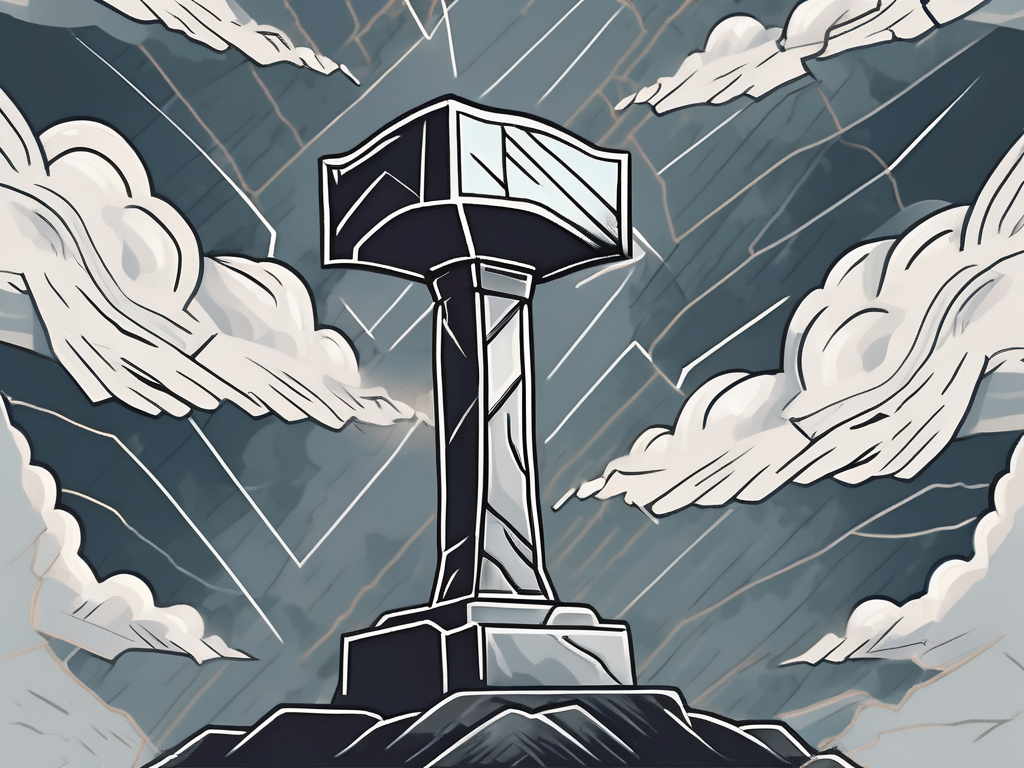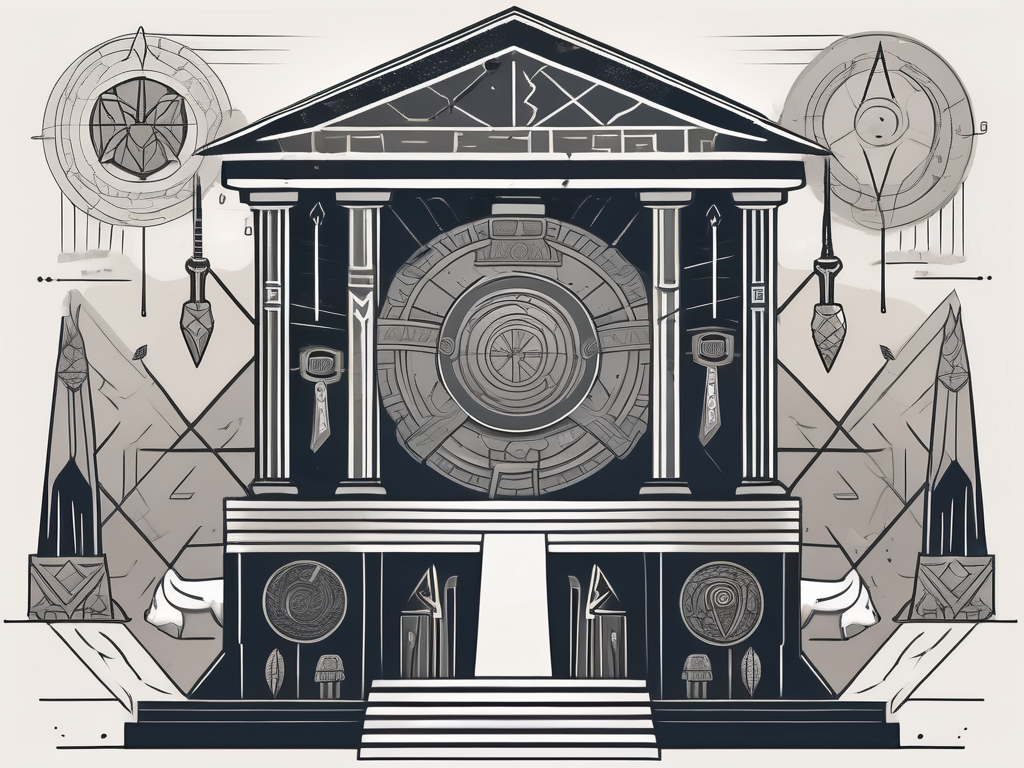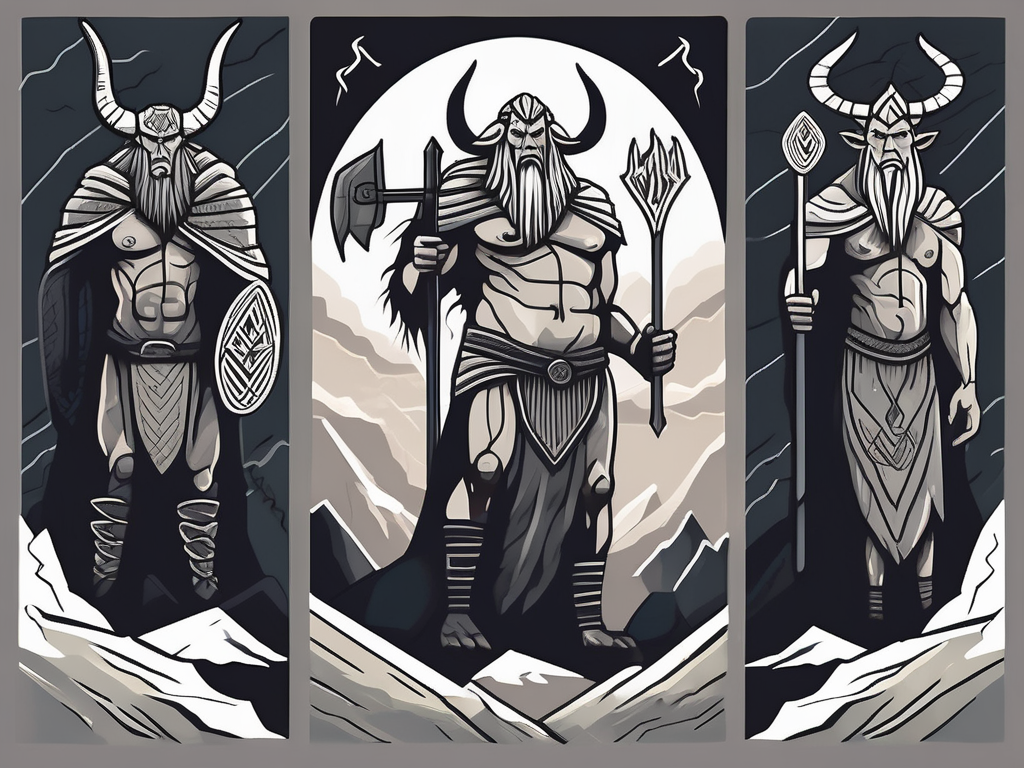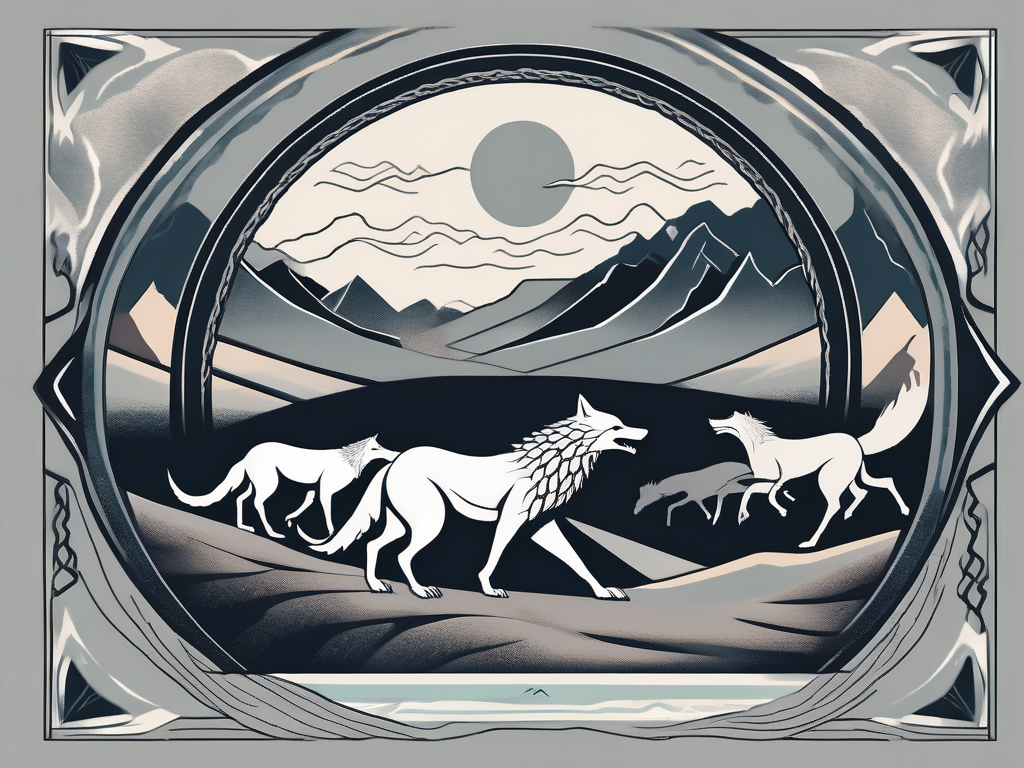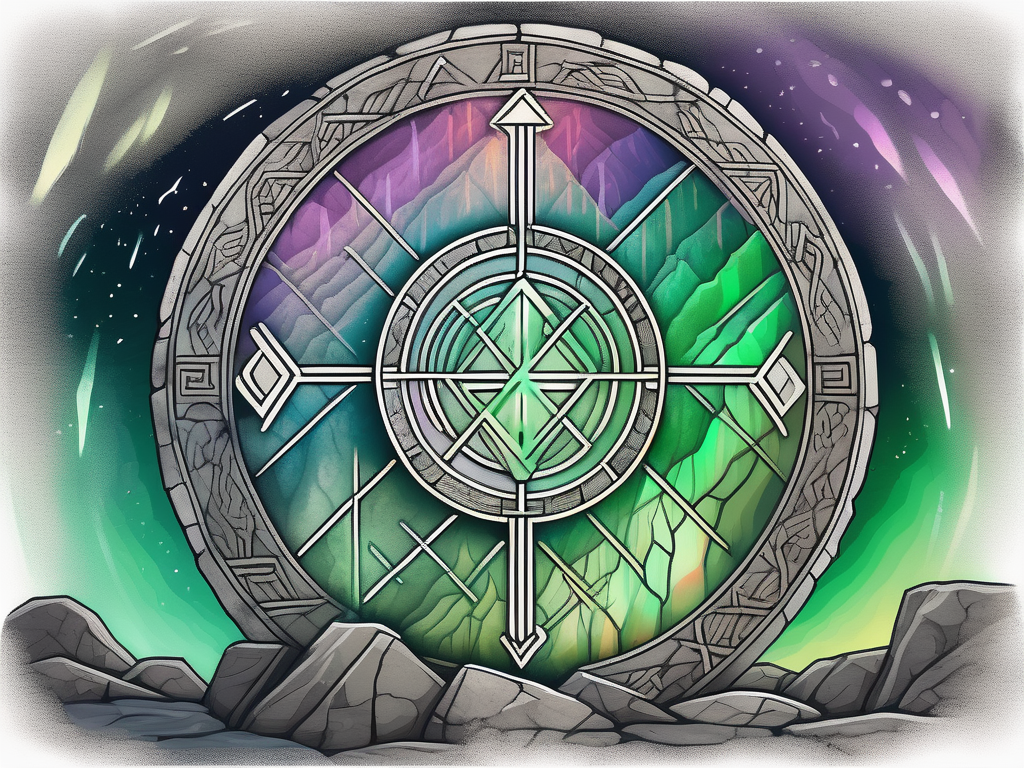The Norse mythology of ancient Scandinavia has long captivated the imagination of people around the world. With its rich mythology, filled with gods, heroes, and epic tales of adventure, Norse culture continues to intrigue and mystify us to this day. One of the most fascinating aspects of Norse culture is the plethora of artifacts that have been unearthed throughout the centuries. These artifacts provide us with a tangible connection to the past, offering a glimpse into the beliefs, values, and daily lives of the Norse people.
Understanding Norse Mythology
Before we delve into the world of Norse artifacts, let’s first familiarize ourselves with the intricate web of stories and characters that make up Norse mythology. The Norse pantheon consists of numerous gods and goddesses, each with their own unique attributes and roles in the cosmic order. From Odin, the wise and mysterious Allfather, to Thor, the mighty god of thunder, and Loki, the cunning and mischievous trickster, the gods of Norse mythology offer a captivating insight into the minds and hearts of the ancient Norse people.
Beyond the gods themselves, Norse mythology also encompasses a vast array of creatures and realms, such as giants, dwarves, elves, and the nine realms that make up the Norse cosmos. These stories were not just entertaining tales, but were deeply ingrained within Norse society, shaping their worldview and providing a moral framework for their actions.
One of the most fascinating aspects of Norse mythology is the intricate relationship between the gods and the natural world. In Norse cosmology, the world is divided into three realms: Asgard, the realm of the gods; Midgard, the realm of humans; and Utgard, the realm of giants. These realms are interconnected through the World Tree, Yggdrasil, which serves as a cosmic axis, connecting the different planes of existence.
Within the nine realms, there are various realms that hold their own unique wonders and dangers. For example, Jotunheim, the realm of the giants, is a land of immense power and chaos. It is home to fearsome giants who constantly challenge the gods and threaten the stability of the cosmos. On the other hand, Alfheim, the realm of the elves, is a realm of beauty and enchantment, where the elves reside in harmony with nature.
Aside from the gods and realms, Norse mythology is also filled with captivating stories of heroism and adventure. One such tale is the epic saga of Ragnarok, the final battle between the gods and the giants. This cataclysmic event marks the end of the world as we know it, where gods, giants, and other mythical beings clash in a devastating conflict that brings about the destruction and rebirth of the cosmos.
It is important to note that Norse mythology was not just a collection of stories, but a belief system that shaped the daily lives of the ancient Norse people. The gods were not distant figures, but beings with whom the Norse people interacted and sought guidance from. Rituals and offerings were made to honor the gods and ensure their favor, while myths and legends were passed down through generations, serving as a way to preserve their cultural heritage.
As we explore the world of Norse artifacts, it is crucial to have a deep understanding of the mythology that inspired their creation. By delving into the rich tapestry of Norse myths, we can gain a greater appreciation for the significance and symbolism behind these ancient artifacts, and the cultural legacy they represent.
The Significance of Norse Artifacts
Norse artifacts serve as tangible links to the ancient past, allowing us to gain a deeper understanding of the cultural and artistic achievements of the Norse people. These artifacts range from intricately crafted jewelry and weapons to everyday objects, each offering a unique glimpse into the lives of those who created and used them.
When we examine Norse artifacts, we are transported back in time to a world filled with rich symbolism and intricate craftsmanship. These artifacts hold stories and secrets, waiting to be deciphered and explored.
Decoding the Symbols in Norse Artifacts
One of the fascinating aspects of Norse artifacts is the abundance of intricate symbols carved into their surfaces. These symbols, known as runes, hold deep meaning and offer insights into the beliefs and values of the Norse people. Each rune carries its own symbolism, representing concepts such as strength, protection, and wisdom.
By deciphering these symbols, historians and archaeologists can unravel the hidden messages and stories contained within these artifacts. The study of runic inscriptions has provided valuable information about Norse mythology, religious practices, and societal structures. It is through these symbols that we can truly understand the mindset and worldview of the Norse people.
For example, the rune Algiz, shaped like an arrow pointing upwards, represents protection and defense. It was often used in amulets and talismans to ward off evil spirits and bring luck to the wearer. The presence of this rune on a particular artifact could indicate its significance in providing protection to its owner.
The Craftsmanship of Ancient Norse Artifacts
The craftsmanship displayed in Norse artifacts is truly remarkable. From exquisitely designed jewelry adorned with intricate patterns to meticulously forged weapons that showcase both beauty and functionality, the skill and expertise of Norse artisans are evident in every piece.
The level of detail and precision in the craftsmanship highlights the importance placed on aesthetics and quality in Norse culture. Norse artisans were masters of their craft, using techniques passed down through generations to create objects that were not only visually stunning but also highly functional.
Take, for example, the famous Viking swords. These weapons were not only deadly in battle but also works of art. The blades were forged with such precision that they could slice through armor effortlessly. The hilts were often adorned with intricate designs, depicting scenes from Norse mythology or symbols representing the owner’s status and achievements.
Similarly, Norse jewelry was crafted with immense skill and attention to detail. Necklaces, bracelets, and brooches were often made using techniques such as filigree, where delicate metal wires were twisted and soldered together to create intricate patterns. These pieces were not only decorative but also served as status symbols, indicating the wealth and social standing of the wearer.
When we examine the craftsmanship of Norse artifacts, we are in awe of the dedication and talent of the artisans who created them. Their work speaks volumes about the importance of artistry and craftsmanship in Norse society.
The Intersection of Mythology and Artifacts
As we explore the world of Norse artifacts, it becomes clear that mythology and art are closely intertwined. Many of these artifacts serve as visual representations of Norse myths and legends, bringing these stories to life in a tangible way.
Artifacts as Storytellers of Norse Myths
One of the remarkable aspects of Norse artifacts is their ability to narrate stories from Norse mythology. Whether through intricate engravings or depictions of mythological scenes, these artifacts offer a multidimensional representation of the myths themselves. They allow us to witness key moments from these ancient tales and gain a deeper appreciation for the stories that shaped Norse culture.
The Influence of Mythology on Artifact Creation
Conversely, mythology played a profound role in the creation of Norse artifacts. The stories and themes of Norse mythology influenced the design, symbolism, and iconography used in crafting these artifacts. The gods, creatures, and symbolism of the myths were incorporated into the very fabric of the artifacts, making them not only functional objects but also vessels that carried the essence of Norse mythology.
The Impact of Norse Artifacts on Modern Culture
Norse mythology and artifacts continue to capture the imagination of modern culture. From blockbuster movies to popular video games, the allure of Norse mythology has found its way into the mainstream. These artifacts, symbols, and stories have become a source of inspiration for artists, writers, and creators across various mediums.
Norse Mythology in Popular Culture
The popularity of Norse mythology can be seen in the abundance of movies, TV shows, and books that draw inspiration from these ancient tales. From the Marvel Cinematic Universe’s depiction of Thor and Loki to Neil Gaiman’s celebrated novel “American Gods,” Norse mythology has firmly established its place in contemporary storytelling.
The Legacy of Norse Artifacts in Contemporary Art and Design
The legacy of Norse artifacts can also be observed in contemporary art and design. The intricate patterns, motifs, and symbolism found in these artifacts have inspired modern artisans to incorporate Norse elements into their work. From jewelry to furniture, the influence of Norse art can be seen in numerous creative endeavors, adding a touch of ancient mysticism to the present.
The Preservation and Study of Norse Artifacts
Preserving and studying Norse artifacts is of utmost importance in order to gain a comprehensive understanding of Norse culture and history. However, there are challenges in ensuring the longevity of these ancient treasures.
Challenges in Preserving Norse Artifacts
The passage of time poses a constant threat to the preservation of Norse artifacts. Factors such as corrosion, decay, and looting can greatly diminish the integrity of these delicate objects. To combat these challenges, archaeologists and conservators employ various techniques and technologies to protect and restore these precious artifacts, ensuring that they continue to enlighten future generations.
The Role of Archaeology in Unveiling Norse Culture
Archaeology plays a crucial role in unraveling the mysteries of Norse culture. Through meticulous excavation and analysis of artifacts, archaeologists can piece together the story of ancient Norse society, shedding light on their way of life, traditions, and beliefs. Each artifact unearthed provides a valuable puzzle piece that contributes to our understanding of this enigmatic civilization.
In conclusion, Norse artifacts hold a profound significance for understanding the culture and mythology of ancient Norse society. Through their mythology-inspired designs, intricate craftsmanship, and timeless narratives, these artifacts offer us a window into a world long gone, yet forever imprinted in the annals of history. By preserving and studying these artifacts, we can continue to unveil the enigmatic beauty and rich heritage of Norse culture for generations to come.
